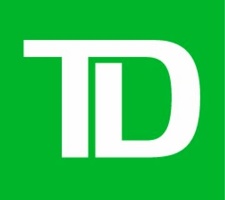@TDAM_Canada
Investor Knowledge + 5 Minutes = New Thinking
U.S. small and mid-cap equities offer investors a dynamic opportunity set of companies that span from emerging small-cap stocks to former large-cap stocks that have stumbled back to mid-cap land. While many U.S. small and mid-cap stocks may not be household names in Canada, today’s largest and most recognizable stocks were once small and mid-cap companies. Apple, Amazon, NVIDIA, and Tesla were all squarely in the U.S. small and mid-cap asset class at one point.
We recognize that U.S. small and mid-caps are not as well represented in investor portfolios in Canada, but an allocation based on an investors risk profile and goals, especially at a time when the U.S. equity market is being led by only a handful of large-cap stocks, today may be an opportune time to consider adding U.S. small and mid-cap stocks to your equity allocation for the benefits of diversification and an expected improved risk-adjusted return profile.
Focusing on an overlooked asset class
To help, TD Asset Management Inc. (TDAM) recently published an article titled Focusing on an Overlooked Asset Class. The article is an easy-to-read Q&A format and covers the "what, why and how" of investing in small and mid-cap equities and, of particular interest is section that discusses how adding small and mid-cap equities can possibly lead to higher returns with lower risk.
Dipping your toes
Adding small & mid-cap stocks to a diversified portfolio can lead to higher returns and lower risk. To help illustrate, the chart below shows the efficient frontier for a portfolio consisting of varying weights of the FTSE Canada Universe Bond Index and the MSCI World Index (blue line). Adding in a small allocation of small and mid-cap stocks to this portfolio can lead to higher returns and lower risk (green line). For instance, from the chart, a portfolio consisting of 50% FTSE Canada Universe Bond Index and 50% MSCI World Index has a 15-year annualized return of 7.5% and an annualized standard deviation of 6.3%. Adding in a 5% weight of small and mid-cap stocks increases the return to 7.6% and decreases the risk to 5.9%.
Solutions from TDAM
To harness the opportunity in the space, TD Q U.S. Small-Mid-Cap Equity ETF (TQSM) aims to provide exposure to a diversified portfolio of small- and mid-cap U.S. companies. By using a quantitative multi-factor approach, which seeks to optimize exposure to stocks that are expected to outperform the market by emphasizing style factors, TQSM aims to provide strong performance.
Currently, TQSM's largest factor exposures are to companies with conservative leverage and low-price volatility, companies with profitable and efficient business models and value with a reasonable quality factor. TQSM is also taking a cautious stance on credit risk. TQSM has performed well within this market environment, with returns for all periods up to 3 years above the benchmark¹. With less concentration risk and lower valuations than the S&P 500 Index along with higher returns and lower volatility than TQSM's benchmark, investors could consider adding TQSM to their U.S. equity allocation.
To view our entire ETF line-up, visit us at td.com/etfs and download our TD ETFs Quick Product Guide.
|
3 months |
YTD |
1 year |
2 years |
3 years |
Since |
|
|---|---|---|---|---|---|---|
|
TD Q U.S. Small-Mid-Cap Equity ETF (TQSM) |
10.36% |
10.35% |
12.77% |
12.58% |
14.44% |
9.50% |
|
Benchmark1 |
12.26% |
-1.54% |
3.46% |
4.55% |
6.94% |
8.97% |
Source: TDAM. As of January 31, 2024. ¹50% S&P Mid Cap 400 Total Return Index (C$), 50% SmallCap 600 Total Return Index (C$). ²November 20, 2019.
The information contained herein has been provided by TD Asset Management Inc. and is for information purposes only. The information has been drawn from sources believed to be reliable. Graphs and charts are used for illustrative purposes only and do not reflect future values or future performance of any investment. The information does not provide financial, legal, tax or investment advice. Particular investment, tax, or trading strategies should be evaluated relative to each individual’s objectives and risk tolerance.
Commissions, management fees and expenses all may be associated with investments in exchange-traded funds (ETFs). Please read the prospectus and ETF Facts before investing. ETFs are not guaranteed, their values change frequently, and past performance may not be repeated. ETF units are bought and sold at market price on a stock exchange and brokerage commissions will reduce returns.
Certain statements in this document may contain forward-looking statements (“FLS”) that are predictive in nature and may include words such as “expects”, “anticipates”, “intends”, “believes”, “estimates” and similar forward-looking expressions or negative versions thereof. FLS are based on current expectations and projections about future general economic, political and relevant market factors, such as interest and foreign exchange rates, equity and capital markets, the general business environment, assuming no changes to tax or other laws or government regulation or catastrophic events. Expectations and projections about future events are inherently subject to risks and uncertainties, which may be unforeseeable. Such expectations and projections may be incorrect in the future. FLS are not guarantees of future performance. Actual events could differ materially from those expressed or implied in any FLS. A number of important factors including those factors set out above can contribute to these digressions. You should avoid placing any reliance on FLS.
TD ETFs are managed by TD Asset Management Inc., a wholly-owned subsidiary of The Toronto-Dominion Bank.
TD Asset Management Inc. is a wholly-owned subsidiary of The Toronto-Dominion Bank.
®The TD logo and other TD trademarks are the property of The Toronto-Dominion Bank or its subsidiaries.
 Canada
Canada

